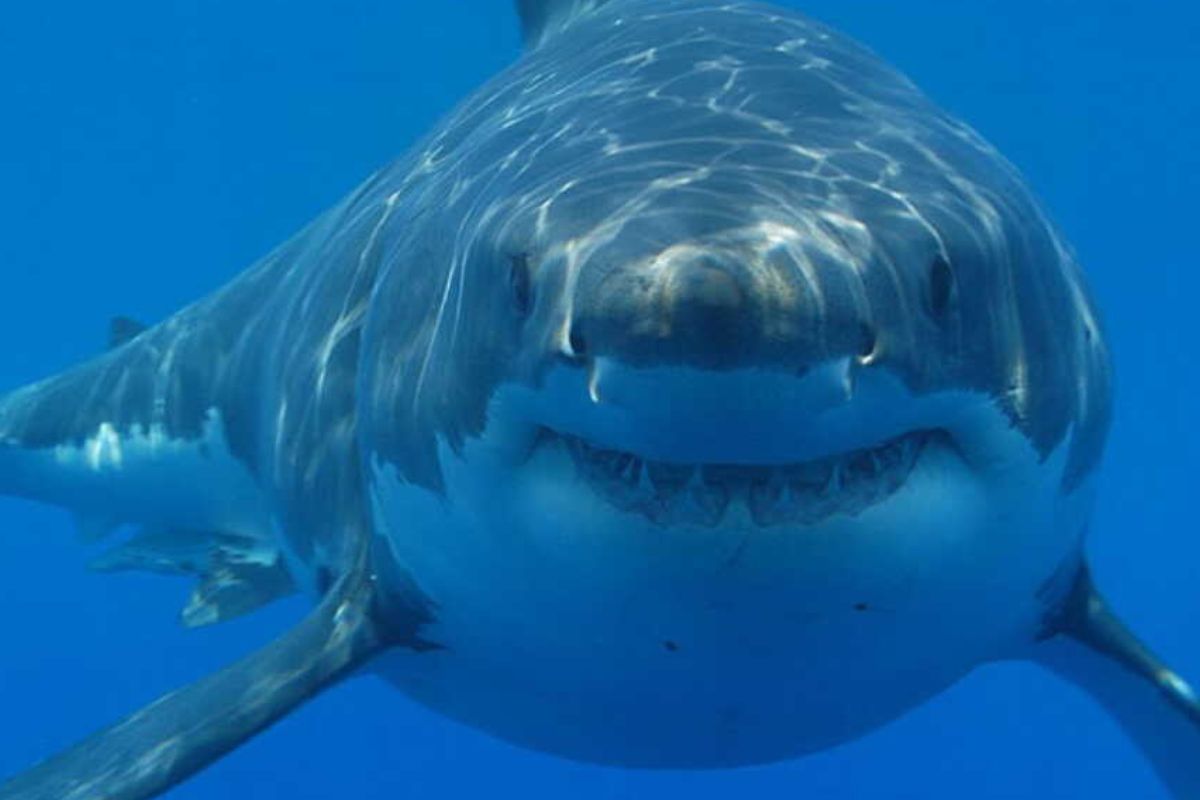Show table of content Hide table of content
Marine researchers have made a groundbreaking discovery off the eastern coast of the United States, capturing and tagging an extraordinarily large male white shark dubbed “Contender.” This remarkable specimen, measuring 4.2 meters (13.8 feet) in length and weighing approximately 750 kilograms (1,650 pounds), has become the largest male white shark ever documented in the Northwest Atlantic, sparking significant scientific interest in the study of these ocean predators.
Record-breaking white shark provides rare research opportunity
On January 17, 2025, the marine research organization OCEARCH successfully tagged Contender approximately 70 kilometers (43 miles) off the Georgia-Florida border. This massive male shark exceeds the typical size range for adult males of his species, which generally measure between 3.4 and 4 meters in length according to data from the Smithsonian National Museum of Natural History.
“Male white sharks typically reach maturity around age 26 when they’re about 3.5 meters long. Finding a specimen approaching 4.3 meters generated tremendous excitement among our research team,” explained Harley Newton, OCEARCH’s chief veterinarian, in a recent interview. Though still considerably smaller than female white sharks, which can grow beyond 6 meters, Contender represents an exceptional find.
The capture of such a large specimen offers researchers a unique window into understanding white shark growth patterns, behaviors, and ecological roles. While marine predators like sharks typically maintain ecological balance, rare tragic accidents involving wild animals remind us of the importance of respecting these powerful creatures in their natural habitats.
Unlike many creatures that form strong bonds, white sharks don’t mate for life but instead follow complex migratory patterns dictated by feeding and breeding opportunities. Understanding these patterns through specimens like Contender helps scientists develop more effective conservation strategies for these vulnerable apex predators.
Tracking technology reveals mysterious migration patterns
To monitor Contender’s movements, researchers attached a SPOT (Smart Position and Temperature) tag to his dorsal fin before releasing him back into the ocean. This sophisticated tracking device transmits the shark’s location data whenever his fin breaks the water’s surface, while also recording valuable information about water temperature and diving depths.
Since his release, Contender has traveled approximately 470 kilometers (292 miles), with his most recent signal detected on February 10 near Merritt Island, Florida, close to Orlando. This tracking data provides crucial insights into white shark migration patterns and habitat preferences that would otherwise remain hidden from scientific observation.
Animals A female sea lion refuses to mate with a male, causing a fight and the closure of the zoo.
“The challenge in studying these magnificent animals reflects their offshore habits. They spend considerable time in deep waters far from where research typically occurs,” Newton noted. This makes tagging operations like the one that captured Contender especially valuable for gathering comprehensive data about white shark behavior.
The remarkable resilience of marine animals in challenging environments has been documented in various contexts. In one extraordinary case, a dachshund survived 16 months stranded on an island surrounded by predators, demonstrating the surprising adaptability some animals possess when faced with extreme circumstances.
Scientific significance beyond size measurements
While Contender’s impressive dimensions have captured attention, his scientific value extends far beyond simple measurements. The data collected from this massive shark will contribute to critical research on white shark population dynamics, breeding behaviors, and conservation needs in the Atlantic Ocean.
Adult white sharks present particular research challenges due to their deep-water preferences and extensive range. Their elusive nature has historically limited scientific understanding, making each successful tagging operation a significant advancement in marine biology.
Animals A hammerhead shark crashes down from the sky in South Carolina, halting a disc golf game.
The information gathered from Contender will help researchers identify essential habitats requiring protection, including breeding grounds and feeding areas vital to white shark survival. This knowledge directly informs conservation policies aimed at preserving this vulnerable species, which plays a fundamental role in maintaining healthy marine ecosystems.
White sharks aren’t the only marine creatures drawing scientific interest. Recently, an adventurous sea lion surprised shoppers at a fish market, highlighting the complex relationship between marine wildlife and human environments. Such interactions emphasize why scientific research like the study of Contender remains critical for developing informed coexistence strategies.
Future implications for shark conservation
The successful capture, tagging, and release of Contender represents a significant milestone in OCEARCH’s ongoing mission to study and protect white sharks throughout the world’s oceans. Each tagged shark contributes to a growing database that reveals increasingly detailed patterns of shark behavior, helping scientists understand population trends and conservation needs.
As a vulnerable species facing numerous threats including habitat loss, illegal fishing, and climate change, white sharks benefit tremendously from the scientific insights gained through specimens like Contender. The data collected will help inform protective measures designed to ensure these magnificent apex predators continue fulfilling their ecological role.
Animals A wild elephant enters a convenience store and raids the food aisle.
Conservation success stories, such as when a dog rescued from a slaughterhouse-bound truck found happiness thousands of miles away, remind us of the positive impact dedicated protection efforts can have. Similarly, the information gathered from Contender may lead to better outcomes for white sharks throughout the Atlantic.
As researchers continue monitoring Contender’s movements throughout 2025 and beyond, each signal from his tag adds another piece to the complex puzzle of white shark ecology. The scientific community eagerly anticipates the valuable insights this record-breaking specimen will provide about one of the ocean’s most mysterious and misunderstood predators.



so scientists are not only baffled, are now puzzled. very interesting.